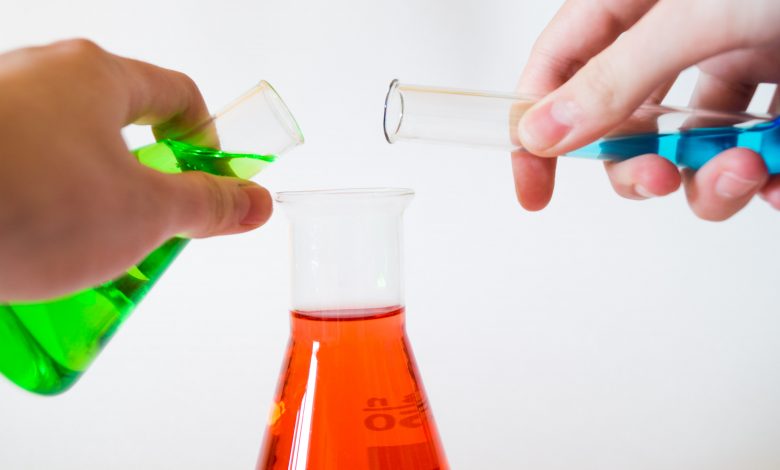How to Calculate Theoretical Yield and Percent Yield

A limiting reactant is a reagent that limits the amount of resulting product in a chemical reaction due to being lesser in quantity. When a limiting reactant is consumed completely, it doesn’t matter how many other reagents are existing in the reaction medium, your reaction cannot proceed further. If so, you will only get the byproducts, not the ones you desired.
By the amount of limiting reagent, you can also calculate the theoretical yield and percent yield. But for this purpose, you first need to identify and calculate the limiting reagent.
Once identified, you can easily move towards the next stoichiometric calculations, including theoretical yield and percent yield calculations.
Calculating theoretical yield using a limiting reactant
Theoretical yield is known as the calculated amount of product that would be formed after the complete consumption of the limiting reagent. On the other hand, the actual yield is the amount that we get in real life after performing the reaction. The steps you need to follow to calculate theoretical yield by limiting reactant are as follows
- Identify the limiting reactant
- Convert the masses of both reactants into moles
- Determine the mole ratio of each reagent and compare them to find the mole fraction
- From the amount of limiting reactant, find out the maximum amount of product that can be formed by this limited amount.
-
Step 1
To further clarify the concept, let’s consider a chemical reaction where 2.80g of 2Al and 4.15g of 3Cl2 reacts to form 2AlCl3.
In the first step, we need to convert the mass of each reactant into a mole using conversion factors such as
Number of moles of Al2 = 2.80g × 1 mol/26.98g Al = 1.04× 10-1 mol Al
The number of moles of Cl2 = 4.15 × 1 mol/70. 90g Cl2 = 5.85 × 10-2 mol Cl
-
Step 2
The second task is to find out which reactant is limiting in the given reaction. For this purpose, we need to find the molar ratio of each reactant and then compare them up to see which reactant is present in lesser amounts such as
The molar ratio of 2Al = 1.04× 10-1 mol Al × 2 moles of AlCl3/ 2 moles of Al
The molar ratio of 2Al = 1.04× 10-1 mol AlCl3
The molar ratio of 3Cl2 = 5.85 × 10-2 molCl×2moles of AlCl3/3 moles of Cl2
The molar ratio of 3Cl2 = 3.90 × 10-2 mol AlCl3
Now, if you see the molar ratio of both reactants, you can notice that the chlorine is less in amount and contributes little to the formation of AlCl3. Thus, in this reaction, 3Cl2 is the limiting reactant.
-
Step 3
Now as we have identified the limiting reactant, the next step is to determine how much AlCl3 can be produced by the 5.85 × 10-2 mol Cl such as
5.85 × 10-2 molCl×2moles of AlCl3/3 moles of Cl2 = 3.90 × 10-2 mol AlCl3
Remember, we are only considering the chlorine here since it is the limiting reagent. During the theoretical yield calculations, you don’t need to count the amount of excess reactant.
-
Step 4
Since we prefer to calculate the theoretical yield in unit mass instead of moles, the last step is to convert the unit as follows
3.90 × 10-2 mol AlCl3 × 133.33 g of AlCl3/ 1 mole of AlCl3 = 5.20g of AlCl3
This is the manual way to calculate the theoretical yield by using a limiting reactant. But if we want to save our time consumed on following these above four steps. We will use the theoretical mass calculator. It is not only a time-saving tool but also provides us with accurate results within a seconds.
Calculating percent yield using a limiting reactant
Now as we have calculated the theoretical yield, we can easily calculate the percent yield using the general formula as follows
Percent yield = actual yield/theoretical yield × 100
Now suppose you got the actual yield equal to 3.80g, set the values on the formula to get your answer are as follows
Percent yield = 3.80g/5.20g × 100 = 73%
Thus, in this way, the value of limiting reactants can help you to perform all these crucial stoichiometric calculations.
No doubt, it is the only way to calculate the percentage yield of limiting reactants, But technology made it easier to solve. We can not only still on solving such calculations on paperwork. There is a number of free online tools available to find the percent yield online.
Percentage yield calculator is not only an advanced tool for calculation. It also provides accurate results to us in detailed solutions.
The amount of actual yield is always less than that of theoretical ones and there could be numerous reasons for it such as incorrect measurements, spills, experimental errors, and manual errors. You can calculate the amount of actual yield experimentally, using measuring instruments.
Remember, If you get a percent yield equal to 100% or more than a hundred, it means you’ve made a mistake during calculations. Thus, in this way, the value of the limiting reactant can help you to perform all these crucial stoichiometric calculations
Conclusion
In short, the theoretical yield is the maximum concentration of a product that a chemical reaction can produce for limiting reactants. For calculating theoretical yield, we need to follow 4 steps like
- balancing the chemical equation evolved in the reaction.
- Converting the reaction entities from grams to the mole. Because gram/mole is the standard unit of mass.
- Later on, this molar ratio will help us to identify the limiting reagents in that reaction. From these limiting reagents, we can identify how much quantity of the product will be produced after consuming all reactants.
- In the last step, you will be able to get theoretical yield through which you can calculate percent yield.
On the other hand, the percentage yield is the ratio from actual yield to theoretical yield. For the calculation of percentage yield, we always require theoretical yield as well as the actual yield. All we have to do is follow that certain formula that is :
Percent yield = actual yield/theoretical yield × 100
The yield percentage formula keeps your brain understanding how you can figure out the percent yield of a reaction using the right formula. The main thing we need to keep in our minds is that percentage yield can never be 100%. It is because of numerous of certain reasons behind like incorrect measurements, wastage of reactants while transferring from one tube to another.
Learn more educational articles from Popular posting, to enhance your educational skills.






